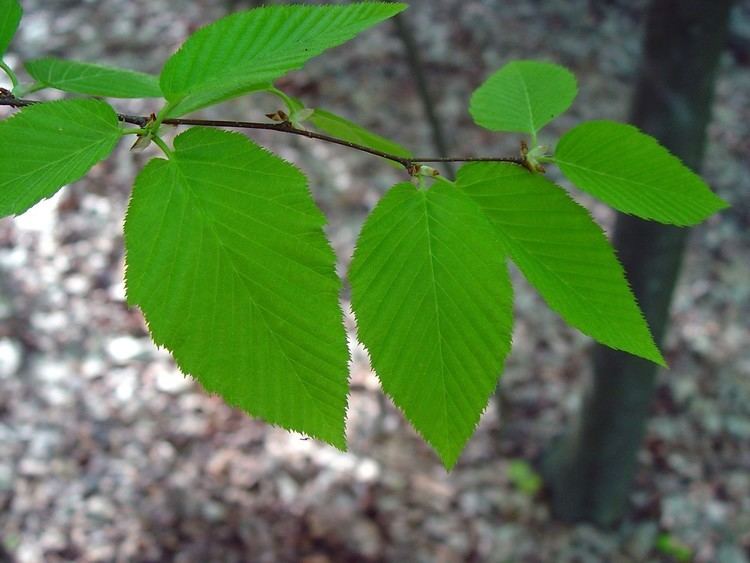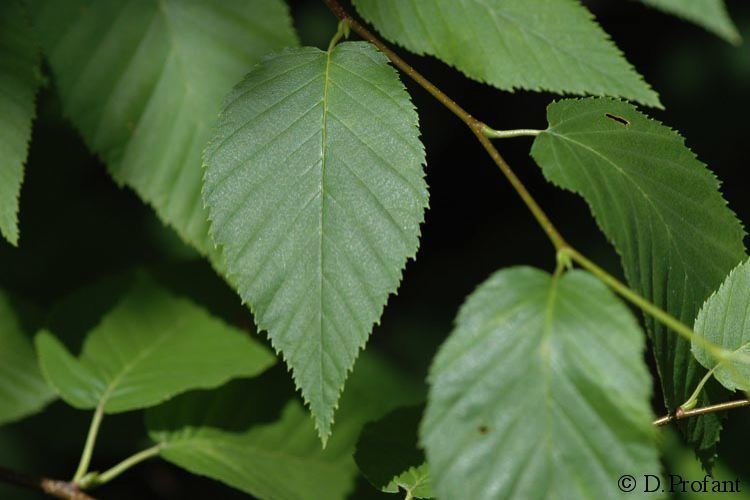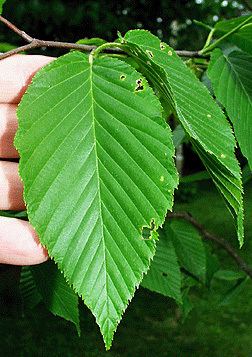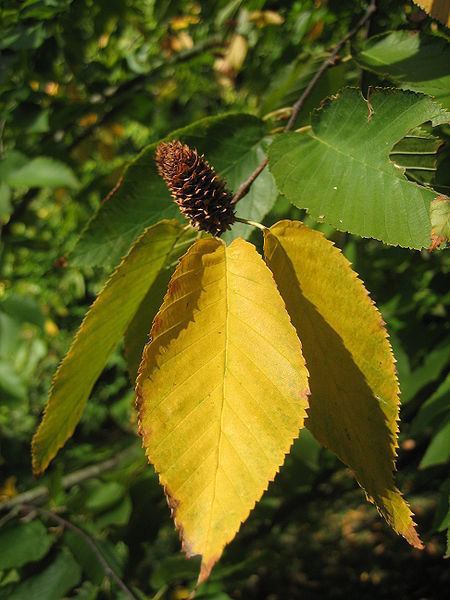Subgenus Betulenta Higher classification Birch | Genus Betula Scientific name Betula lenta Rank Species | |
 | ||
Similar Birch, Betula alleghaniensis, River birch, Paper birch, Betula populifolia | ||
Betula lenta
Betula lenta (sweet birch, also known as black birch, cherry birch, mahogany birch, or spice birch) is a species of birch native to eastern North America, from southern Maine west to southernmost Ontario, and south in the Appalachian Mountains to northern Georgia.
Contents

Characteristics and habitat

Betula lenta is a medium-sized deciduous tree reaching 25 m (82 ft) tall with a trunk up to 60 cm (2.0 ft) diameter. In younger trees the bark is characteristic of most birches, with smooth bark and distinct horizontal lenticels. It is sometimes mistakenly identified as a cherry tree. In some older tree specimens the bark can (unlike most birches) develop vertical cracks into irregular scaly plates revealing rough darkish brown bark patterns. This, however, does not occur in all specimens. The twigs, when scraped, have a strong scent of wintergreen due to methyl salicylate, which is produced in the bark. The leaves are alternate, ovate, 5 to 10 cm (2.0–3.9 in) long and 4 to 8 cm (1.6–3.1 in) broad, with a finely serrated margin. The flowers are wind-pollinated catkins 3 to 6 cm (1.2–2.4 in) long, the male catkins pendulous, the female catkins erect. The fruit, maturing in fall, is composed of numerous tiny winged seeds packed between the catkin bracts. Seed production mainly occurs in trees that are between 40 and 70 years old, although light crops may occur as early as 20 years. The average lifespan of B. lenta is 100 years, with a maximum of 150.

Betula lenta was used commercially in the past for production of oil of wintergreen before modern industrial synthesis of the oil; the tree's name reflects the wintergreen scent of the shoots.

The sap flows about a month later than maple sap, and much faster. The trees can be tapped in a similar fashion, but must be gathered about three times more often. Birch sap can be boiled the same as maple sap, but its syrup is stronger (like molasses).

The leaves of this species serve as food for some caterpillars (see List of Lepidoptera that feed on birches) and the solitary leaf-cutter bee Megachile rubi cuts pieces from the leaves to line the cells of its nest.



